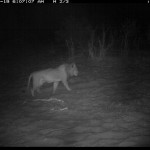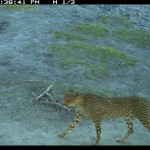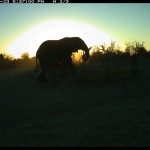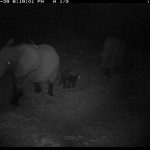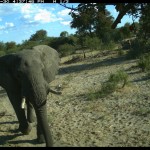Visit to South Africa
March 5, 2013Back in the field by Josephine Walker
October 3, 2013Camera Traps by James Stevens
Memphis Zoo has kindly donated five reconyx camera traps at the end of last year and we thought it was time to let you know what we had been getting up to with them and our future plans.
Camera traps are a great tool for monitoring wildlife. However useful it would be we are unable to sit in trees for 24hrs a day for four weeks at a time monitoring what comes walking past us (something about health and safety) but this is exactly what camera traps do. One of the great things about elephants is that they tend to follow the same route from their grazing area to the river producing very nice, obvious “elephant highways”. We have been setting up our cameras overlooking these highways close to the river to get a better understanding of when the elephants are coming to the river to maximise the efficiency of our data collection during the day. It also allows us to check that the data we collect during the day is representative of what is going on at night when we can’t work.
The camera traps have allowed us to also pick up some of the harder to spot animals in the area. We got our first sighting of a female breeding herd on one of our camera traps in July and we have recently been seeing them more often. One encounter of the female breeding herd was documented in a video where one of the females took far too much of an interest in the camera and really left it battered and bruised but luckily still working (video can be seen below).
Camera traps are triggered by movement and although we are only studying elephants we often get images of the other animals in the park using these elephant corridors. This has allowed us to collaborate with other organisations and share data. In August we worked with Walking for Lions who were carrying out a lion census in Makgadikgadi Pans National Park. They were also using camera traps for their study allowing both organisations to maximise their data collection whilst also learning about each other’s study animal.
So what’s next for the camera traps? Well, we now have seven camera traps in total and we plan on placing them in the park at the elephant “hotspots” to monitor the seasonal patterns of use and to carry on checking that the data we collect during the day is representative of what’s going on at night. So watch this space.

